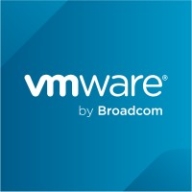

ServiceNow IT Operations Management and VMware Tanzu Platform compete in the IT management and cloud operations space. ServiceNow appears to have an edge with its comprehensive suite of discovery, service mapping, and AI-driven solutions, while VMware Tanzu excels in Kubernetes management and integration with VMware tools.
Features: ServiceNow IT Operations Management provides a scalable framework with features like Cloud Discovery, Log Analytics, and Event Management within an AI-driven interface, aiding in streamlining operations. VMware Tanzu Platform focuses on Kubernetes management, offering features such as multi-tenancy and robust integration with VMware tools like ESX and vSAN. Its dashboard for CI/CD and cluster lifecycle management enhances its utility in cloud environments.
Room for Improvement: ServiceNow's high pricing model could be adjusted for smaller enterprises, alongside enhancing its app store and refining Service Mapping. Improving AI capabilities and third-party integrations also remain crucial. VMware Tanzu would benefit from better integration with non-VMware cloud platforms and a refined security architecture. The user interface requires advanced technical knowledge, and pricing could be more competitive with improved container networking control.
Ease of Deployment and Customer Service: ServiceNow showcases flexibility across cloud setups, excelling in public and hybrid configurations. Customer service is moderate to high, requiring better technical support in some areas. VMware Tanzu also offers versatile deployment, necessitating advanced expertise for optimal use. Its customer support, while effective, would benefit from faster response times and improved consistency.
Pricing and ROI: ServiceNow IT Operations Management's high cost limits its appeal to large enterprises but offers significant ROI through efficiencies and comprehensive management capabilities. Licensing offers some flexibility with yearly and subscription options. VMware Tanzu is also expensive due to its bundled solutions with other VMware products. Competitive discounts are available, with good value attributed to its advanced integration capabilities. Both platforms present substantial ROI but could improve initial cost structures for better accessibility to smaller businesses.
| Product | Market Share (%) |
|---|---|
| ServiceNow IT Operations Management | 1.8% |
| VMware Tanzu Platform | 1.1% |
| Other | 97.1% |


| Company Size | Count |
|---|---|
| Small Business | 12 |
| Midsize Enterprise | 5 |
| Large Enterprise | 26 |
| Company Size | Count |
|---|---|
| Small Business | 10 |
| Midsize Enterprise | 3 |
| Large Enterprise | 10 |
ServiceNow IT Operations Management (ITOM) is a cloud management and infrastructure tool that facilitates the administrative and development process of creating, planning, and operating digital services, technology, application requirements, and components for organizations. Service Now ensures effectiveness, performance, and availability throughout an organization's processes and services.
ServiceNow ITOM will help organizations facilitate consistent policies with regard to deployment, support, and services to ensure trustworthiness and quality of service (QoS). ServiceNow ITOM will ensure that all applications, services, and infrastructure are consistently available and stable.
ServiceNow IT Operations Management Features
ServiceNow IT Operations Management Benefits
ServiceNow ITOM enables organizations to become robust, strategic operations able to successfully anticipate issues before they have an impact on the organization. Organizations that use ServiceNOw ITOM will be able to easily automate workflows and improve how their IT teams communicate and work together to deliver successful outcomes and maintain productivity and profitability 24/7.
Reviews from Real Users
“With this solution, operational costs will be reduced. Your maintenance cost will be reduced when you use the item model. You will deliver a fast solution to the customers. If something happens on the server-side or router-side, it will be immediately caught. Efficiencies are improved. “ - Rupesh J., Solutions Architect at Globant
“It has been very useful for tracking. It has evolved a lot over time, and there is a single pane of glass where you can track and see everything.” - Uday T., Project Manager at MindTree
VMware Tanzu Platform is designed for cloud-native development and management of Kubernetes, CI/CD processes, microservices, and containerized workloads. It supports deployments both on cloud and on-premises, providing centralized management via Mission Control.
VMware Tanzu Platform offers seamless integration with vSphere, ESX, and vSAN, supporting centralized cluster management and lifecycle management. The platform provides a GUI for monitoring CI/CD pipelines and network policies, enhancing multi-tenancy and Day 2 operations. Users can easily manage Kubernetes clusters, monitor applications, and integrate with tools such as GitHub, GitLab, Cloud Foundry, and Azure. It ensures compliance and security for service providers, financial institutions, and businesses.
What are the key features of VMware Tanzu Platform?
What benefits and ROI should users look for in VMware Tanzu Platform reviews?
Industries such as financial institutions, service providers, and businesses requiring rigorous compliance and security deploy VMware Tanzu Platform. These entities benefit from centralized management, streamlined DevOps processes, and integrated tools, enhancing their capabilities in cloud-native developments and containerized workloads.
We monitor all Cloud Management reviews to prevent fraudulent reviews and keep review quality high. We do not post reviews by company employees or direct competitors. We validate each review for authenticity via cross-reference with LinkedIn, and personal follow-up with the reviewer when necessary.